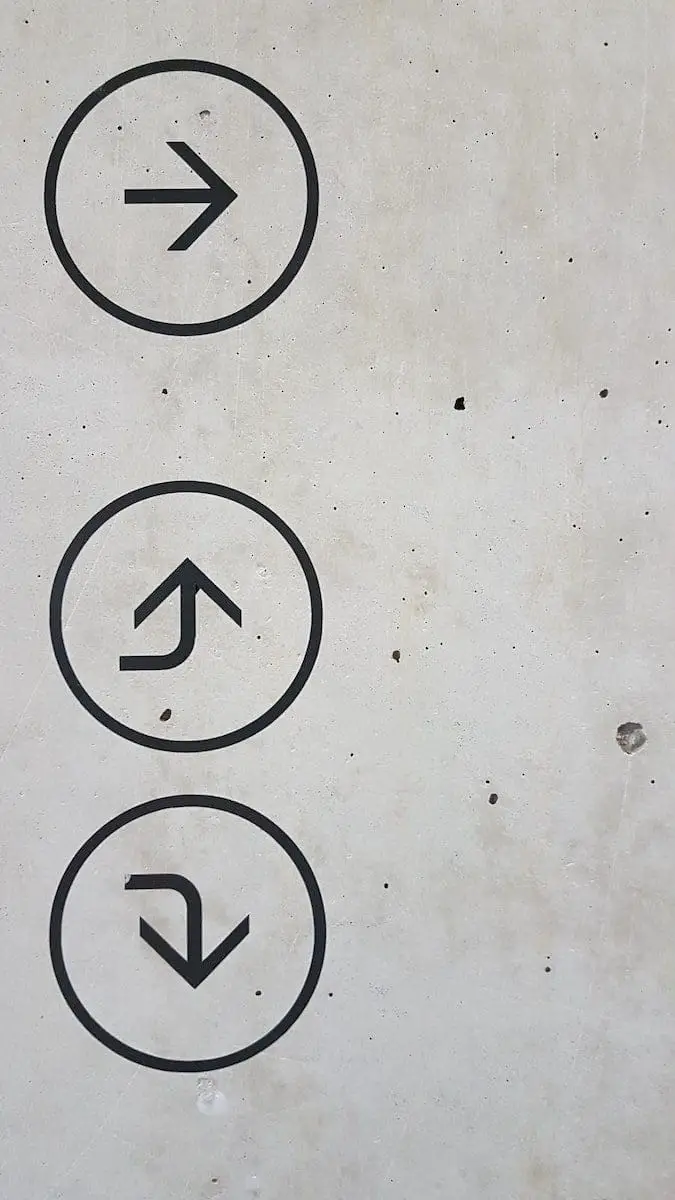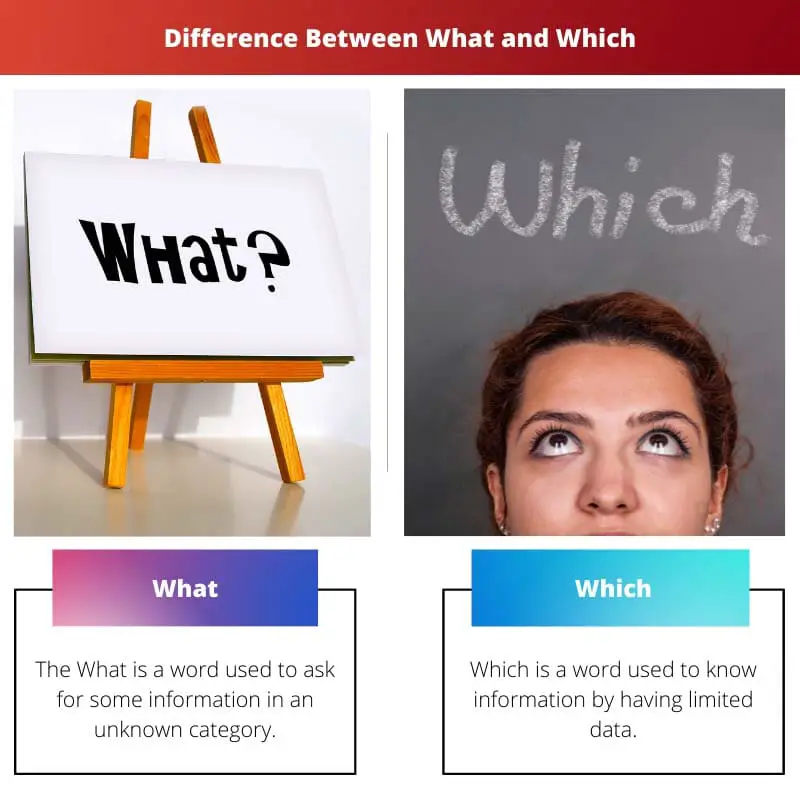When we ask about something, we use terms like What, Which, How, and some others. Here, we can see the information on the words What and Which.
Key Takeaways
- “What” is used to ask for general information, while “which” is used for specific information.
- “What” is used when the options are not limited, while “which” is used when the options are limited.
- “What” is more commonly used than “which” in everyday conversation.
What vs Which
The difference between What and Which is that What is a pronoun that an individual uses to ask something in infinity criteria. Which is an adjective that an individual uses to ask for some information in limited data. Both the words What and Which had been used to question, but the way of questions varies from each other.

Apart from Pronoun, an individual will use this word as a determiner. Like a Pronoun, the word What can be used as a subject, object, and complementary verb.
We use the term Which when we want to perceive some information in the given limited data. The Adjective, Which had been used when the clause had dropped and left the meaning of the sentence.
Comparison Table
| Parameters of Comparison | What | Which |
|---|---|---|
| Meaning | The What is a word used to ask for some information in an unknown category. | Which is a word used to know information by having limited data. |
| Category | It is a Pronoun that we use in the English Language. | It is an Adjective. |
| Usage | If something poses too many replies, we use the pronoun What. | If the query had to limit answers, an individual tries to use the Adjective Which. |
| Difference | It requires unlimited data that is no boundaries to answer. | This adjective had used with boundary data. |
| Examples | What is your Surname? What is your problem? | Which hand will use to write? Which flight are you taking to India? |
What is What?
The What is a word that an individual uses to pose a question. The word What belongs to the Pronoun, where sometimes it acts as a determin. Some examples of the Pronouns are
- What are the questions you are preparing for the test?
- What do you like the most about me?
- What day is your surgery?
What had been called an interrogative pronoun counters the question to others. The Pronoun What can pose the sentences like an offering, requesting, or suggesting, when pronoun had added with some other related words. For example
- What about Sunday morning for a walk?
- What about going on vacation on holidays?
The above questions say that an individual is offering and asking at the same time. These questions will be posed to a group of people and sometimes to individuals, too.

What is Which?
Which is the word that people use to pose a question. It is well known as an Adjective, where sometimes it acts as a determining term. Some of the examples on the Adjective are
- Which train are you taking to go?
- Which pair of dresses do you decide to wear to a party?
In the above questions, we can observe that the questions are asked to the person. In question 1, an individual who chooses the dress for the photoshoot has limited options. An individual can ask questions to a group of people by using this adjective.

Main Differences Between What and Which
- The information is unknown while using the Pronoun What, where there is some familiar information with the adjective Which.
- What ends with a question mark where the term “Which” is sometimes incomplete sentences in paragraphs.




